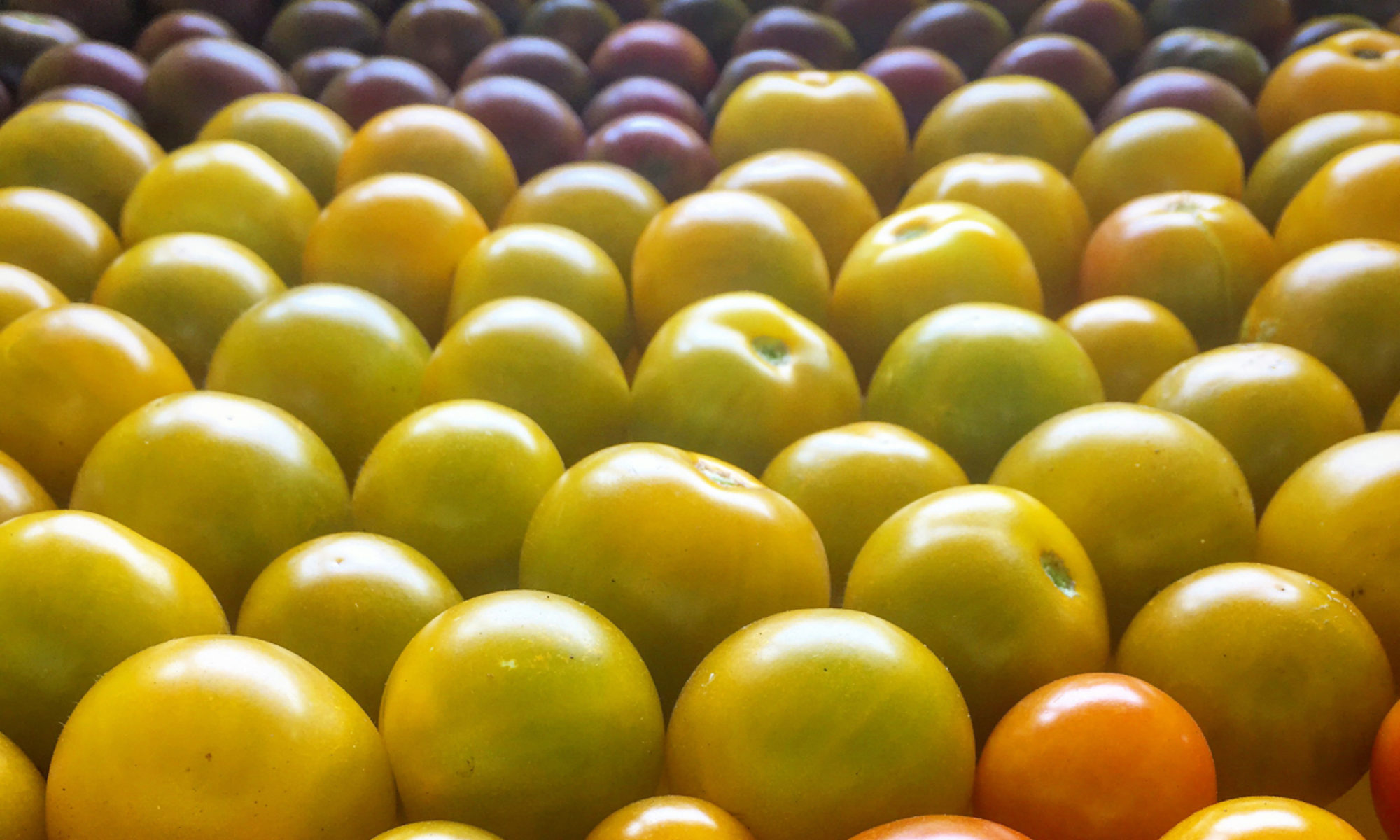
Spurred by a question in a farming group on Facebook asking about end walls that allow tractor access I thought I’d outline a few of my preferences, and tradeoffs with different designs. Over the years I’ve seen a lot of hoop house and greenhouse end walls and I’ve built quite a few as well. The photo above is the most recent design I’ve used. It’s my most recent iteration of a longstanding roll up end wall and was inspired by some of the designs below. It’s relatively cheap and easy to build and use, and it allows full access to the house with a tractor.
Here in the Northwest we’re not worried about extreme low temps so the vent at the top of the end wall isn’t designed to seal super tight, but it activates automatically with a wax cylinder opener and is very, very good at keeping the tunnel from overheating in the early spring when we go back and forth between sun and clouds all day long and we don’t want to leave the ends rolled up. The “hinge” is just two bolts on either side of the frame.
The posts on the outside of the rollups are important to keep the door from swinging dangerously in the wind. Most of the winter the sides of the door plastic are just wiggle-wired to the full frame. The wire comes off when we start rolling up the door. To access the house there is a small door framed in the side wall (barely visible on the far side of the house). Yes, the door is only as tall as the vertical part of the wall so you have to duck to get in unless you’re really short. The side walls are also roll up, but the one on the far side only rolls up to the door, stopping a bit short of the end of the wall. This little access door saves a lot of wear and tear on the roll up, and makes access much easier when the end wall is rolled down. I think the biggest problem so far with this design is that the little wooden “roof” from the supports is a perfect place for yellow jackets to hang their nests. The one other slightly tricky bit is that you have to roll up the doors before rolling up the sides. Not really a big deal as that’s the way it usually works anyway.
The tunnel above is a 20’ wide low profile semi quonset type from Oregon Valley Greenhouse and is at Our Table Farm in Sherwood, OR. Below is a 30’ wide tunnel at Liberty Gardens in Pennsylvania. The roll up doesn’t quite extend to the corners of the house, but there’s still pretty good access.

Not shown in the photo is a center post that they use to keep the door from swinging in the wind. For a 20’ opening in moderate winds I haven’t found it necessary, but I think it probably is essential for a 30’ opening. There is a piece of pipe driven into the ground that the support pipe slips down into and then it’s attached to the top of the door frame when they’re not actually using the tractor in the tunnel (or at least that’s my memory of how it worked). Doors like this are big sails, and with a little wind they can exert a lot of force on the supports so it pays to really secure them well. This can be really tricky in wet soil. I’ve had a lot of stakes I thought were secure wiggle their way out of the saturated soil over night with gusty winds.

Here’s another version of a roll up end wall on a Haygrove single bay 3 season tunnel up on Foxglove Farm, on Salt Spring Island in BC. I put up this photo because this one uses extra heavy plastic on the door to reduce the effect of wear. It also uses their quick release clips with vinyl tape to secure the plastic, which is actually pretty secure, and does come apart easily (the tunnels are designed to be moved seasonally).

For their more permanent tunnels at Foxglove, Michael framed very light end walls that attach with a few bolts. The end walls have a light door in them, but when he wants to access the insides of the tunnels with the tractor the bolts are removed and two people can carry the end walls off to the side and lay them in the grass (this happens about twice a year).

Another design that I’ve seen in a few places, and tried myself, is scissoring doors. I first tried these with some multi-bay Haygrove tunnels. It’s a cheap, “easy” design, but there are enough problems with it that I gave up. The primary trick is how to secure the doors from swinging into and out of the tunnel. Usually these doors have a piece of pipe that hangs from the center top of the end wall and can be tied up to the side wall when you want to open the door. The pipe needs to be secured at the ground when the door is closed, and sandbags were not nearly enough in our case, nor was a steel contractors stake driven 2’ into the ground, or a light T post that the doors broke after a few weeks of the wind tugging on it. Tying ropes horizontally across the end bows about 3’ off the ground, both inside and outside the door did help, but we had to untie them any time the tractor was going into the hoop house. We gave up on the pipe and just used them as curtains for a little while (shown in the photo from Sauvie Island Organics, near Portland, OR circa 2006), but eventually we gave up on the end walls all together for these three season tunnels and just used the tunnels as giant umbrellas, which is what we needed most anyway.

When I visited Eliot Coleman in Maine in 2015 he was working with scissoring doors on his tunnels. I don’t remember the details of why, probably mostly for good air flow with something that was easy to access. His tunnels have a bar that runs across the opening so no good for tractor access (but he does the tractor work before moving the tunnel over the crop), but a perfect place to secure the scissoring pipes. At the time he was just using a bolt with a wing nut and had holes drilled in each of the pipes. It was a slick design, very simple and effective for his needs.


